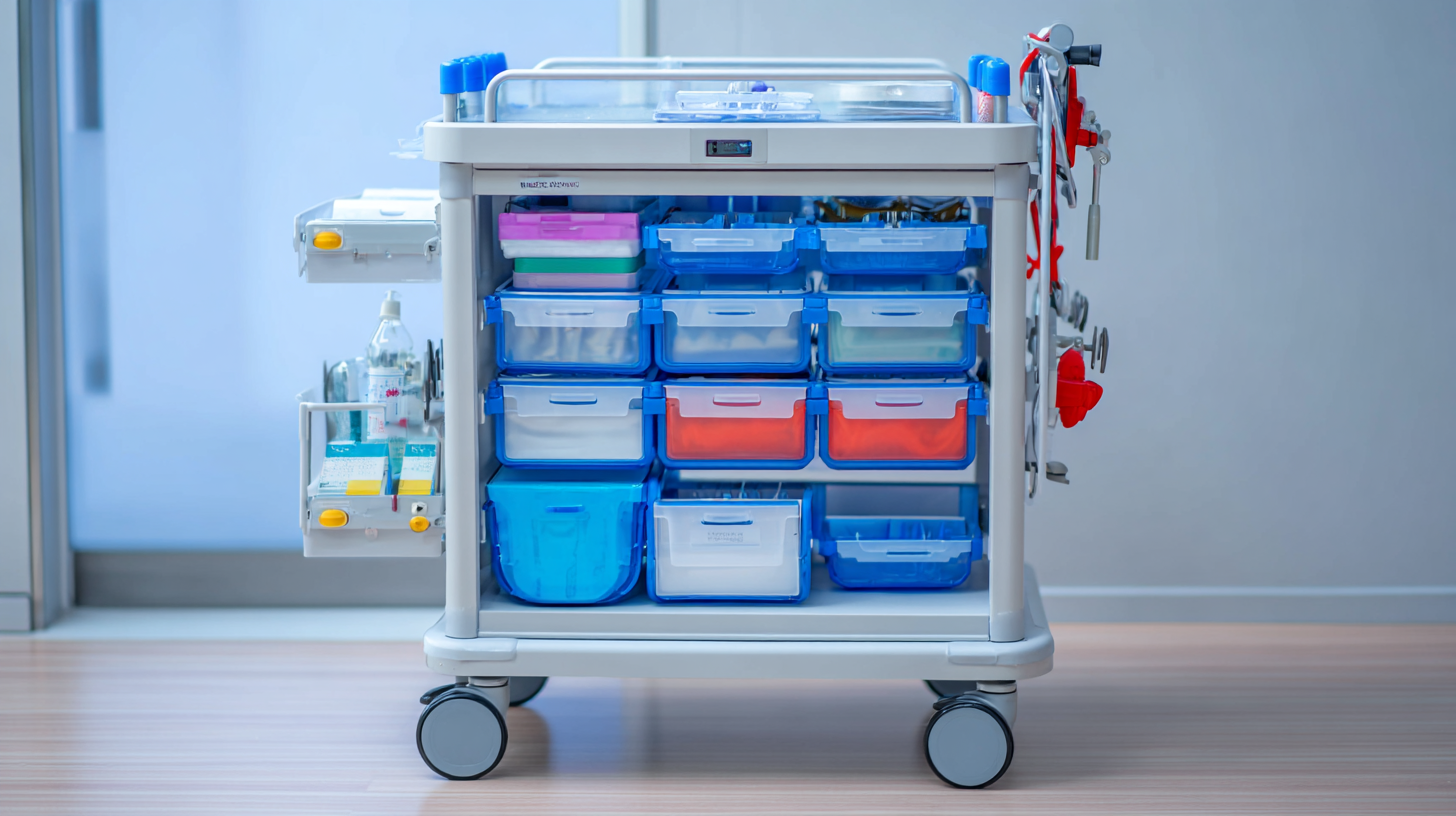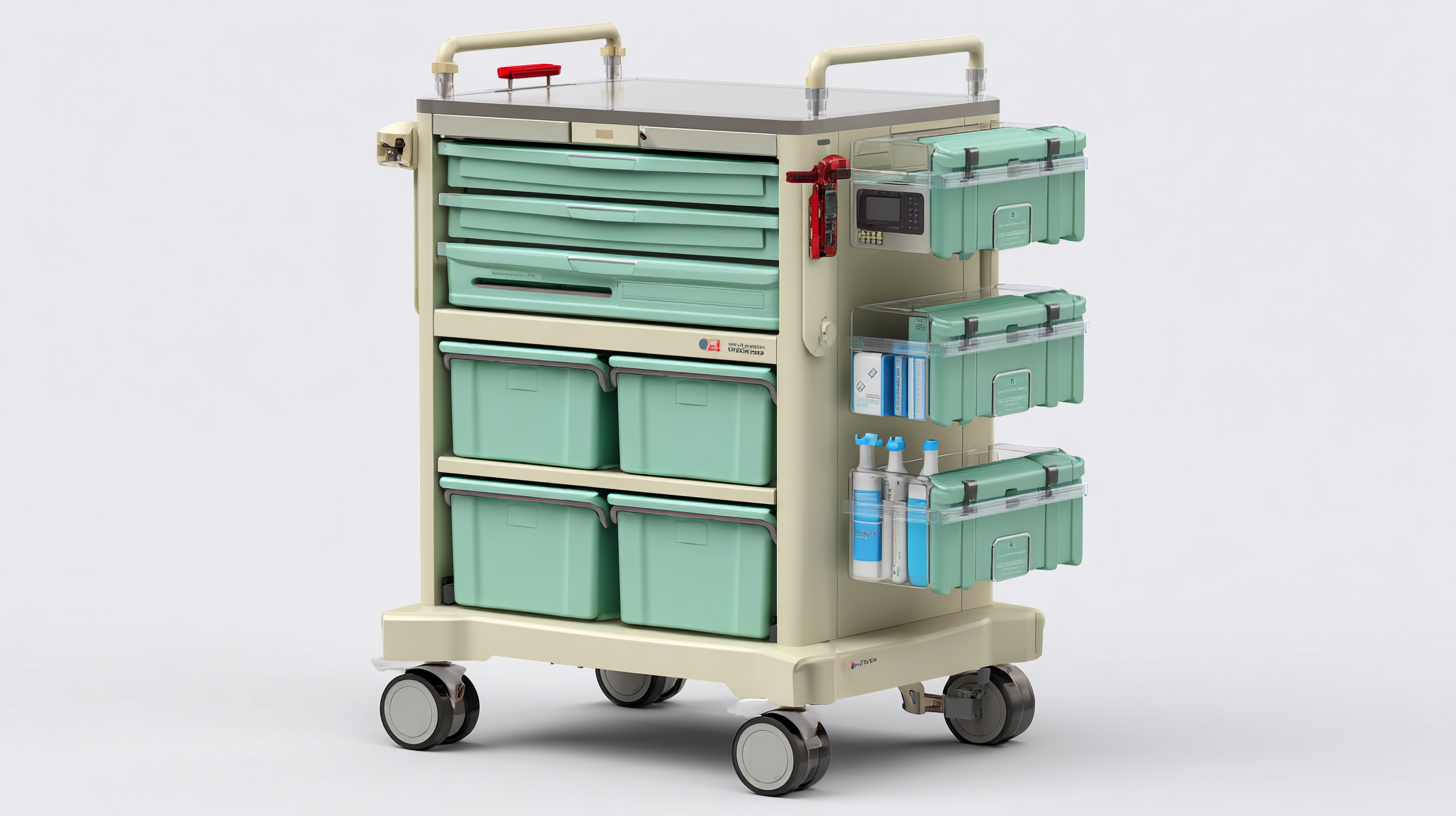7 Essential Tips for Choosing the Best Rolling Medical Cart
In the ever-evolving landscape of healthcare, the demand for efficient and mobile solutions like rolling medical carts has surged. According to a report by Grand View Research, the global market for medical carts is projected to reach $3.1 billion by 2027, driven by the increasing need for streamlined patient care and the rising prevalence of chronic diseases. A well-designed rolling medical cart can significantly enhance workflow, ensuring that healthcare professionals have quick access to essential tools and medications. However, with countless options flooding the market, selecting the right manufacturer becomes critical for healthcare facilities aiming to optimize their operations. This blog will explore seven essential tips for choosing a top-tier rolling medical cart manufacturer, ensuring that your investment not only meets current operational needs but also adheres to the highest standards of quality and durability.

Identifying Key Features of a Quality Rolling Medical Cart
When selecting a rolling medical cart, understanding the key features that define quality is crucial. First and foremost, sturdiness is essential. A well-constructed cart should be able to withstand daily use in high-pressure environments, such as hospitals and clinics. Look for materials like high-grade steel or durable plastics that offer both resilience and longevity. Additionally, stability is vital; carts should have a solid base and properly designed wheels to prevent tipping and ensure safe maneuverability.
Another significant feature to consider is storage capacity and organization. A quality rolling medical cart should have multiple compartments, drawers, or trays that can accommodate various medical supplies efficiently. This not only enhances workflow but also enables medical professionals to access essential items quickly during emergencies. Additionally, adjustable shelves can add versatility, allowing for customization based on specific needs. Don't overlook the importance of ergonomic design; carts should be easy to push and pull, minimizing strain and promoting better posture for users. Prioritizing these features will help you choose a rolling medical cart that meets both functionality and safety requirements.

Evaluating Supplier Reputation and Customer Reviews
When selecting a rolling medical cart, it's crucial to consider the reputation of suppliers and customer reviews. A reputable supplier often indicates a commitment to quality and service that can significantly impact your purchase decision.
Evaluating the supplier's history and consistency in delivering reliable products can provide peace of mind that the cart will meet your needs. Look for suppliers who have established track records in the medical equipment industry and are known for their transparency and responsiveness to customer inquiries.
Customer reviews also serve as a vital resource in this decision-making process. They offer real-life insights into the performance, durability, and usability of specific models. Pay attention to both positive and negative feedback, as this will give you a balanced view of what to expect.
Reviews can highlight factors such as ease of maneuverability, storage capacity, and overall satisfaction with the cart. By leveraging the experiences of others, you can make a more informed choice that aligns with your specific requirements, ensuring that your investment in a rolling medical cart supports the highest standards of care.
Understanding Different Types of Rolling Medical Carts
When selecting a rolling medical cart, understanding the various types available is crucial. The most common types include medication carts, treatment carts, and supply carts, each designed to serve specific purposes in healthcare settings. Medication carts, for instance, are equipped with compartments ideal for storing and dispensing pharmaceuticals safely, ensuring that healthcare providers can manage medications efficiently during patient care.
On the other hand, treatment carts are designed for easy access to medical instruments and supplies needed during procedures. They often feature multiple drawers and surfaces that can hold tools, dressings, and other essential items required for treatments. Supply carts, meanwhile, focus on transporting and organizing larger quantities of medical supplies, making it easier for staff to maintain inventory and fulfillment within busy environments.
Choosing the right type of rolling medical cart depends on the specific needs of the facility and the workflows of healthcare professionals. By evaluating the functions and features of each type, facilities can enhance their operational efficiency and improve overall patient care.
Medical Cart Features Comparison
This chart compares the essential features of rolling medical carts, including weight capacity, drawer size, the number of drawers, wheel size, and the materials commonly used.
Essential Considerations for Cart Customization and Accessories
When selecting a rolling medical cart, customization is key to meeting specific healthcare needs. One essential consideration is the cart’s layout. Depending on the environment—whether it's a hospital, clinic, or emergency room—your cart should have a configuration that allows easy access to supplies. Consider adjustable shelves and modular compartments that can be reconfigured as your requirements change. This flexibility will not only enhance functionality but also improve the workflow in critical situations.
Additionally, don’t overlook the importance of accessories. A well-chosen accessory set can significantly enhance the utility of your medical cart. Think about including features like lockable drawers for medication security, integrated power outlets for electronic devices, and attachments for IV poles or oxygen tanks. Investing in quality accessories ensures that your cart remains versatile and effective, tailoring it to various medical procedures while streamlining operations in fast-paced environments. By focusing on customization and thoughtful accessories, you’ll ensure your rolling medical cart meets the demands of healthcare professionals.
7 Essential Tips for Choosing the Best Rolling Medical Cart
| Consideration | Description | Importance |
|---|---|---|
| Weight Capacity | Ensure the cart can handle the necessary weight for equipment and supplies. | High |
| Mobility | Look for carts with durable wheels for easy maneuverability. | High |
| Storage Options | Consider the number and type of drawers or bins for organized storage. | Medium |
| Customization | Evaluate available accessories or adjustable features for personalized use. | Medium |
| Material Durability | Choose carts made from high-quality, easy-to-clean materials. | High |
| Ergonomic Design | Look for designs that minimize strain and provide comfort for users. | Medium |
| Price Point | Consider your budget while ensuring quality is not compromised. | High |
Cost-Effectiveness: Balancing Quality and Budget Constraints
When selecting a rolling medical cart, it's essential to consider cost-effectiveness without sacrificing quality. According to a report by the Healthcare Financial Management Association, hospitals spend approximately 5-10% of their total budgets on medical supplies, including equipment like carts. Therefore, finding a cart that meets your specific needs while staying within budget constraints is crucial.
One important tip is to assess the durability and materials of the cart. Investing in high-quality materials may seem like a larger upfront cost, but it can significantly reduce the need for frequent replacements. For instance, carts made from high-density polyethylene can endure the rigors of daily use while being easy to clean, ultimately saving you money in the long run. Additionally, consider the cart's functionality; some models come with features like locking drawers or adjustable shelves, which can enhance workflow efficiency.
Another aspect to evaluate is warranty and service options. A robust warranty can indicate a manufacturer's confidence in their product and provide peace of mind for your investment. According to a survey from the American Association of Healthcare Administrative Management, nearly 78% of healthcare administrators prioritize warranty coverage in their purchasing decisions. By weighing these factors, you can strike the right balance between quality and budget constraints while ensuring that your medical staff has the best tools for patient care.

